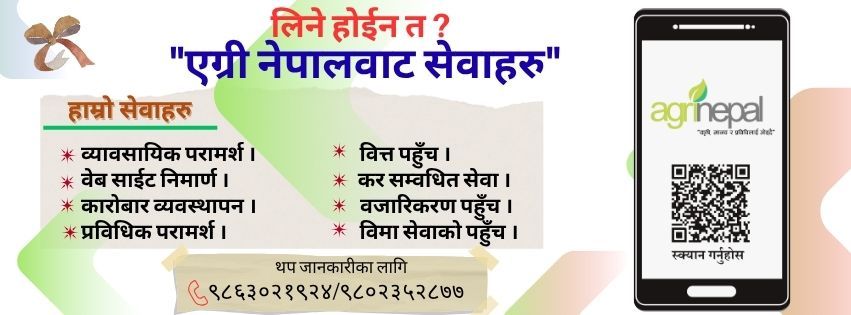Millet Day in Nepal: A Wake-Up Call for Inclusive Value Chain Development

Nepal celebrates Millet Day from this year on Shrawan 16, recognizing the significance of this ancient grain that holds immense nutritional, cultural, and economic value. This government-led initiative is a welcome step toward reviving interest in millet, especially at a time when Nepal faces increasing food imports and a weakening domestic agriculture system.
But while Millet Day creates awareness, we must ask: Is the celebration enough? Or are we once again repeating the cycle of focusing only on production, without building the full value chain?
The Current Millet Scenario in Nepal
Millet, known locally as kodo, foxtail millet (kaaguno), and finger millet (marshi), is cultivated across Nepal, especially in the hilly and high-altitude regions. However, millet cultivation has significantly declined over the years. According to the Ministry of Agriculture, Nepal's millet production stood at around 300,000 metric tons in 2024, but the area under millet cultivation has decreased by nearly 30% in the last two decades. Farmers have shifted to more commercial or fast-growing crops due to low market returns, lack of processing technology, and poor integration with the consumer market.
From Farm to Finger: Local Innovation Leading the Way
In the journey of promoting millet, some pioneering examples show what's possible when creativity meets enterprise:
- Kodo Nach, a traditional millet snack, became a hot cake at farmers’ markets and farm-to-table events organized by R & D Innovative Solution. From farm to finger, this product symbolizes how millet can be transformed into a market success story.
- Mahi Enterprise’s Multi-Grain Loodhu, a nutritious traditional energy bar made from millet and other grains, became quite popular among trekkers and high-end consumers. This is another shining example of how a small enterprise, when skilled and supported, can turn local grains into mainstream products.
Today, we can find millet biscuits, flours, flakes, porridges, and even noodles in urban markets—thanks to the growing awareness of millet's nutritional superiority. Rich in fiber, iron, and protein, millet helps fight malnutrition, lifestyle diseases, and is ideal for diabetic and gluten-intolerant populations.
The Risk of Repeating Old Mistakes
Despite progress, a familiar pattern is repeating. The government has focused primarily on production, announcing subsidies and awareness campaigns. However, no strong support for post-harvest processing, branding, or marketing has been observed.
This top-down approach risks falling short, as imported food products continue to dominate Nepali markets, and local millet remains undervalued. If value addition, processing, packaging, and marketing are ignored, Millet Day risks becoming another symbolic event without long-term impact.
What Needs to Change?
To make millet a household grain again and reverse the trend of increasing imports, Nepal needs an inclusive and sustainable millet value chain:
- Engage Private Sector: From soil preparation to shelf display, private enterprises must be actively engaged. Without them, innovation, scale, and quality are hard to achieve.
- Support Processing & Marketing: Government and donors must invest in processing units, skill development, and brand-building for millet-based products.
- Focus on Nutrition & Urban Demand: Urban markets and health-conscious consumers are demanding millet. Promoting millet as a superfood can help drive consumer demand, ensuring better prices for farmers.
- Create Millet Clusters: Support cooperatives and micro-enterprises to work collectively—especially in high-millet production areas.
- Public-Private-Producer Partnerships (4Ps): Only a joint approach can scale up the impact.
Mechanization needs along the millet value chain:
1. Pre-Production & Land Preparation
- Mini tillers and power tillers with appropriate attachments (e.g., rotavator, plough) to prepare land, especially in hilly terrain.
- Laser land levelers for better water use efficiency in flat areas (esp. Tarai).
- Bio-fertilizer or compost applicators for eco-friendly nutrient management.
2. Seed Sowing & Planting
- Manual or powered seed drills for precise sowing and reduced seed wastage.
- Line sowing machines to ensure proper spacing, reduce labor, and improve weeding efficiency.
- Direct millet seed planters suitable for small plots and slope lands.
3. Crop Management
- Intercultural weeders or brush weeders to reduce labor for weeding.
- Battery-operated or manual sprayers for organic or integrated pest and disease management.
- Soil moisture meters and basic ICT tools for monitoring crop needs.
4. Harvesting
- Sickle or serrated sickle for smallholders (manual option).
- Mini millet reapers (lightweight machines) for faster harvesting and labor saving.
- In sloped areas, custom hiring services for harvesting could be promoted where individual ownership isn’t viable.
5. Post-Harvest Handling
- Threshers specifically for small grains like millet—can be manually operated or powered by diesel/electric motors.
- Millet cleaners and graders to separate stones, husk, and broken grains for better marketability.
- Moisture meters to ensure safe storage conditions.
6. Processing & Value Addition
- Dehulling machines (for finger millet, foxtail millet, etc.).
- Milling units for flour and semolina (suji).
- Roasting and puffing machines for snacks.
- Extrusion machines for noodles, flakes, and energy bars.
- Packaging machines for vacuum sealing or nitrogen flushing for shelf-life enhancement.
7. Storage & Transportation
- Metal bins or hermetic storage bags to prevent pest infestation.
- Cool storage or moisture-proof rooms for processed products.
- Small solar dryers or mechanical dryers for hygienic drying before storage.
- Cold chain for millet-based value-added products like energy bars in urban markets.
8. Market Access & Digital Tools
- Digital weighing machines.
- Mobile-based apps for traceability, pricing, and market linkage (e.g., Agrinepal, Krishidoot).
- E-commerce platforms to sell millet-based products directly to consumers.
Supporting Ecosystem
- Custom Hiring Centers (CHCs) or Farmer Service Centers with millet-related machinery on rent.
- Training and capacity building for farmers, Krishidoots, and local entrepreneurs on mechanization use and repair.
- R&D on location-specific millet machinery (e.g., Nepal’s hill-focused agri-mechanization).
Summary of Key Machines
|
Stage |
Mechanization Needed |
|
Land Prep |
Mini tiller, Rotavator |
|
Sowing |
Seed drill, Line sowing tool |
|
Weed Mgmt |
Weeders, Sprayers |
|
Harvesting |
Millet reaper, sickle |
|
Post-Harvest |
Thresher, Cleaner, Grader |
|
Processing |
Dehuller, Mill, Roaster |
|
Packaging |
Sealers, Packer |
|
Storage |
Metal bins, Hermetic bags |
|
Marketing |
Digital tools, Weighing machine |
Conclusion
Millet is not just waiting for celebration—it’s waiting for intervention at every level: production, processing, policy, and promotion. It deserves to be on every plate not only for tradition's sake but also for nutrition, sustainability, and food sovereignty.
As we observe Millet Day, let us remember: A grain alone cannot thrive unless the whole system is nourished.
Let’s move from production-focused programs to value chain-based transformation—before millet becomes a forgotten crop in our own soil.
ट्रेण्डिङ समाचार
ताजा समाचार
-
१.
-
२.
-
३.
-
४.
-
५.
-
६.
-
८.
-
७.
-
९.
-
१०.



प्रतिक्रिया